Someday in the future, when Trinbago nationalism becomes a common experience across our multifaceted demographic, February 1970 will surely be memorialised collectively as the month that precipitated the most significant events in the history of the two-island state since Emancipation.
I am motivated to write this piece not only because of the historical importance of February to the Black Power Movement (BPM) but also because of the significance of Carnival 1970 to the public education campaign of the BPM.

(Courtesy Embau Moheni/NJAC)
In 1970, at least four bands engaged in political protests through masquerade in Port-of-Spain (Interview with Khafra Kambon). The Pinetoppers’ portrayal, “The Truth About Africa: Before, Then and Now” and a St James band playing “1001 White Devils” were outstanding examples of anti-colonial masquerade.
Unknowingly, these bands were the catalyst for the events identified by some as the February Revolution. Over the next three months, T&T effectively eclipsed Jamaica as the revolutionary capital of the Anglophone Caribbean.
Mark Fraser equates the events of February 1970 with “a revolutionary bang.” He asserts: “In three short months (February to April), the Black Power Movement swept through Trinidad and Tobago like a whirlwind, touching almost every district in the country.” [Trinidad Express, 1 September, 2012].
The National Joint Action Committee (NJAC) was formed by Makandal Daaga, Khafra Kambon and Aiyegoro Ome, the leaders of a February 1969 UWI campus protest against Canadian Governor-General Roland Michener, and rapidly became “the umbrella organisation that served as the vanguard” of the Movement.
Did the BPM only superficially “touch” wide swaths of the country? Or was it a truly national phenomenon that forged deep alliances between Africans and Indians?
There is a commanding narrative of dissent among “the Indian-Trinidadian intelligentsia,” as defined by Kamal Persad, which denies authenticity to any claim of Indian-African unity in the BPM. One of the most persuasive advocates of this narrative is anthropologist Dr Kumar Mahabir.
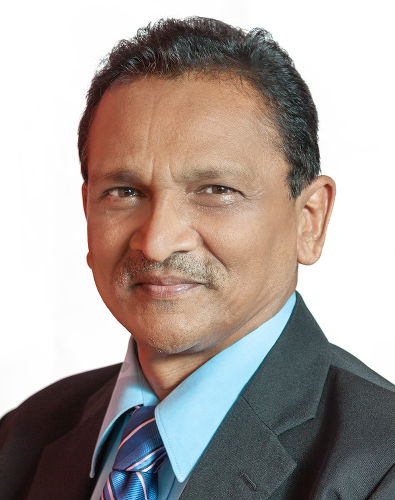
Mahabir argues that Winston Leonard and Chan Maraj, two Indian detainees at Nelson Island, “were aliens to the Indian community.” He passionately deprecates them as “confused men without a cultural identity.” [“East Indians and the Black Power Revolution,” available at http://www.trinbagopan.com/Kumarmahabir.htm].
Although admitting that the late Dr Ken Parmasad “was involved in the movement,” Mahabir equivocated when ascribing to Parmasad the view that “although the platforms reflected what was considered by many at the time to have been the indication of a genuine desire for the equal and free expression of African and Indian cultural ways, beliefs and practices, the cultural symbols which dominated the movement were Black/African.”
In referencing Terisa Turner (a graduate student), Mahabir further argues that it was only after 7 March, 1970 “that the NJAC campaigned for the inclusion of Indians in the Movement, but the colour, tune, tone and texture of the Movement had already been set.” Mahabir did not explain the components he identified.
Mahabir showers praises on Professor John La Guerre for his book, Calcutta to Caroni (1972), in highlighting pre-Independence Indian cultural associations in Trinidad, but chastises him for acclaiming that the Black Power Revolution (BPR) had “reawakened racial and ethnic pride among Indians.” Notwithstanding this admonition, Mahabir surprisingly credits the BPR for providing “an argument and a justification for Indians to practice their Ancestral culture for [sic] a call for racial equality in all shares [sic] of the multi-ethnic society” (a Freudian slip?).
This week’s column will provide some fresh insights for evaluating Indian-African collaboration, mainly through the voices of other local Indian intellectuals who were interviewed and/or participated in a seminar on Black Power hosted by the St Augustine campus of The UWI in March 2015.
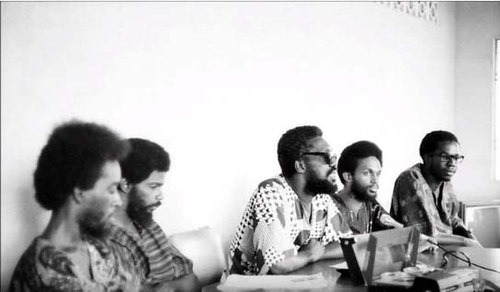
(Courtesy Embau Moheni/NJAC)
A review of Indian-African collaboration prior to 1970 provides valuable lessons. In 1903, the Water Riots culminated in the burning of the Red House. Although the vast majority of the rioters were of African descent, the Trinidad and Tobago Royal Gazette reported that Indian activists were a critical mobilisation force on the day of the fire:
“The streets of the town had been paraded during the morning [of the fire] by a number of coolies ringing bells and carrying placards with the description, ‘Come to the Red House at 12 o’clock today or you will have to pay more rent.’”
The colonial authorities clearly dreaded the subversive potential of Indian-African collective action. This fear of inter-ethnic unity for ending white domination was actually expressed by G.F. Huggins during the Waterfront Riots of 1919-1920.
According to Bridget Brereton in A History of Modern Trinidad, 1783-1962, the dockworkers’ strike soon spread island wide and included plantation-based Indian labourers in several districts as well as urban Indians and Africans.
The main forces behind the disturbances were radical African leaders from several Caribbean territories, mainly Guyana and Barbados; the infiltration of Garveyism from the USA as well as a similar African race-conscious, British-based civil rights group, the Society of Peoples of African Descent; returning dissident veterans of World War 1; and the general depressed state of the economy (Brereton, History).
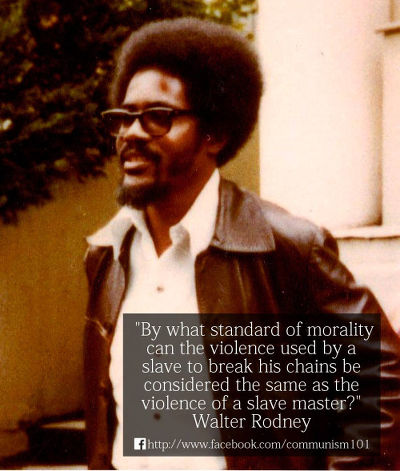
The subtext of Mahabir’s writings on the BPM suggests that the Indian-Trinidadian intelligentsia is most concerned about 1970 because it came too close to achieving broad-based Indian-African unity, which many dreaded could unleash doomsday threats to Hindu conservatism. This fear was most graphically expressed by Bhadase Sagan Maraj, as he planned a war against the April 1970 March to Caroni.
Unlike Mahabir, Professor Brinsley Samaroo relishes this moment of inter-ethnic nationalism, which he often combines with the workers’ uprisings in 1937. To him, “The high point in the history of Trinidad and Tobago was when Africans and Indians came together (…) and Butler and Rienzi [Krishna Deonarine] came together; similarly, with 1970.” This alliance of oil and sugar workers was rooted in the 1919-1920 riots.
Merely one month after his appointment as lecturer at The UWI, Samaroo was “press-ganged” into Black Power activism by Daaga, Kambon and Ome. Nevertheless, he assumed the role of “conscientising” the masses with great enthusiasm. Two other lecturers, Bill Riviere and Patrick Emmanuel, were similarly press-ganged as missionaries of revolutionary conscientisation.
Samaroo’s task was to educate the masses on Indian and Indian diaspora history across the country. These included communities in mainly African-dominated areas, such as Belmont, a place he had never visited before. Among his mentees were Beverley Jones and Guy Harewood, both of whom were killed by police in the Northern Range.
Samaroo was well prepared for this mission. As a teenager in 1956, he had helped to organise his hometown, Rio Claro, for a meeting of the PNM. From Dr Eric Williams, he had learned an indelible lesson: the imperative of “the decolonisation of the mind.”
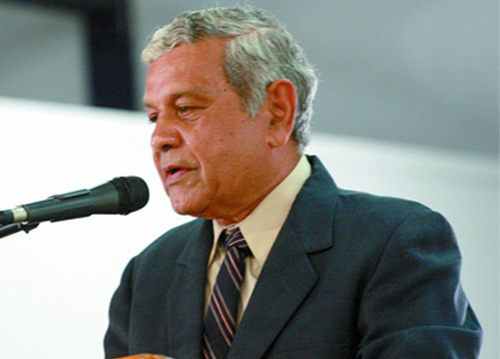
(Copyright Bocas Lit Fest)
Samaroo was one of the few Caribbean experts in Indian history, having graduated from Delhi University with a Master’s Degree in History. As a Ph.D candidate at London’s School for Oriental and African Studies (SOAS), he came under the influence of Black Power icon Walter Rodney who taught him the rudiments of historical research and the issues of colonisation in the Caribbean.
Samaroo admits that, except for Ken Parmasad and a minute number of other Indian students, Indians on the St Augustine campus were generally apathetic toward Black Power. To Samaroo, however, Parmasad was “one of the leaders of the BPM” through his writings in OWTU’s Vanguard newspaper and in guaranteeing the security of the March to Caroni.
Samaroo recounts, “Bhadase had ordered the fellows in the village that you cannot allow this march to take place; that they would rape your daughters.” Not relying on fear-mongering alone, “he put them with guns on both sides of the road, and told them ‘once the niggers start to react, you all will know what to do.’” Bhadase was no stranger to violence, and—if Samaroo’s account is accurate—it would be foolhardy to wager that he did not mean to carry out his threat.
Samaroo testifies that he asked Bhadase’s “soldiers” in Bejucal, his mother’s village, “So, you will shoot me, too?”
One soldier responded sombrely, “Yes, cuz, if we have to.”
Fortunately, according to Samaroo, Parmasad had gone into all the villages along the route of the march “and really conscientised those people, so you would be surprised the amount of old Indian women and men coming out with water, giving us sweetdrink [soda], because it was a very hot day, and giving us support continuously. So, in that way, they were prepared to stand against Bhadase, because they understood, and it was being said all the time, on the big banner in front of us: INDIANS AND AFRICANS UNITE NOW. And the reception was very good.”
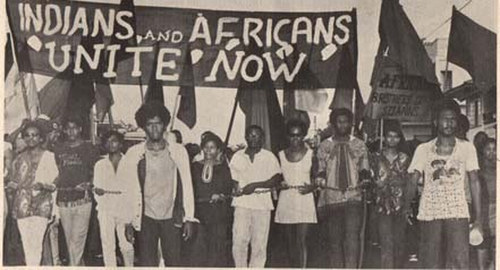
(Courtesy Embau Moheni/NJAC)
Elsewhere, Dr Mahabir has argued that the generosity of the Indians had nothing to do with their allegiance to the BPM; rather, it was “characteristic Indian hospitality.”
The truth probably lies somewhere between these two narratives. Indeed, it takes a tremendous investment of faith to believe that Ken Parmasad, a young radical immersed only in campus politics, had accumulated so much charisma as to neutralise the socio-religious influence of Bhadase at the height of his power.
Bhadase had earned his spurs as “Baba” to the greater Hindu population: at the time of the BPM, he was the founder of the Sanatan Dharma Maha Sabha, the architect of a national Hindu primary school system, the political leader who had defeated the PNM in the Federal Elections of 1958 and the incumbent MP for Chaguanas.
To better evaluate the motives of Indian villagers in the Campus to Caroni march, one must look at events in the months leading up to February 1970. As local white land owners continued to sell out to English conglomerate, Tate and Lyle, the mainly Indian farmers in the Montserrat area engaged in public protests to save their lands from the clutches of Tate and Lyle. According to Khafra Kambon, NJAC—working mainly through Joe Young and Clive Nunez as intermediaries—joined forces with the farmers and successfully got the government to intervene against the English conglomerate.
In the immediate aftermath of their victory, those same farmers became a critical support group for striking bus workers, providing meals for them in their protest camps in Port-of-Spain.
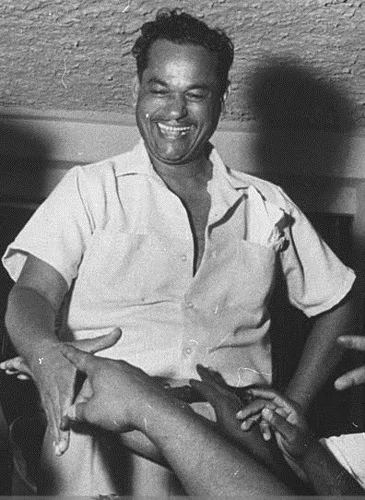
NJAC had sown immense goodwill among the Indian working-class months before, a fact that Mahabir overlooks. It is not inconceivable, therefore, that the massive support of the march was a genuine expression of gratitude and camaraderie, not just a cultural obligation.
Against this historic roadmap, Samaroo’s account of the Caroni March has much credence. Indeed, according to Samaroo, as darkness overtook the marchers in the Couva-Felicity area, “and when people didn’t have a place to sleep, the Indian people were going to African brothers and saying, ‘Come by me. If you could be in a movement so, then all ah we is one.’” Samaroo also credits Parmasad for pre-arranging with certain families to accommodate marchers should the need arise.
In the euphoria of the successful march to Caroni, the BPM sought more direct confrontation with the social and political elites by planning a march to Port-of-Spain. This planned march triggered the State of Emergency on 21 April.
Both Riviere and Emmanuel were detained at Nelson Island. The story of Samaroo’s continued freedom is interesting. Months after the State of Emergency, Bhadase explained to him that it was he who had instructed Eric Williams not to touch Samaroo because he wanted him to manage a newspaper to promote Indian affairs.
The close alliance between Bhadase and Williams in 1970 speaks to the political pragmatism of both men. Both were anxious to pre-empt the march to Port-of-Spain for different reasons. According to Samaroo, Bhadase feared the cultural-racial implications of permanency in the unity between Indians and Africans; Williams feared for the survival of his regime.
Professor Kelvin Singh was a graduate student at The UWI in St Augustine in 1970. He did not get directly involved in BP activism but admits, “I think the Black Power Movement had a great impact on all of us, whether we were part of it or not.” [Interview, March 2015).
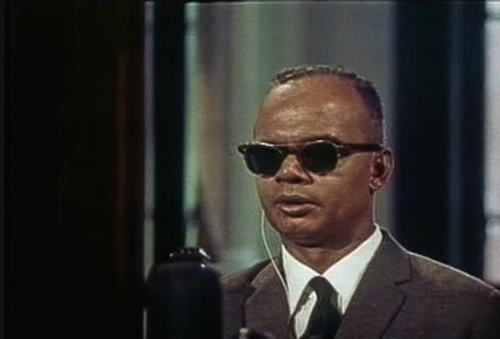
(Courtesy Information Division)
Because of the influence of Black Power, Singh developed a radical writing style, which he channelled into Moko, the organ of the James Millette-led United National Independence Party (UNIP) of which Singh was Education Officer. The Black Power dream of racial unity resonated in Singh’s “main political task” to erode “biracial” politics in the country.
Dr Kusha Haraksingh was also a graduate student at The UWI’s Mona, Jamaica campus, where Black Power was a “deeply felt movement among students.” [Interview, March 2015]. Like Samaroo, Haraksingh admired Walter Rodney as an exceptional scholar. As a Block leader in Chancellor Hall, Haraksingh was among the students who marched in full academic regalia to downtown Kingstown to protest the government’s ban on Rodney.
Mahabir alleges that Leonard, Chan Maraj and Raja Ramlogan “did not talk about India, Indian history and Indian heritage with the same passion as their African counterparts talked about their ancestral past.” Interestingly, Mahabir omits Samaroo from his equation.
That is not to say, however, that Mahabir does not raise pertinent epistemological and pedagogical issues. Among them is the suggestion that the term “Black Power” (like many other radical concepts) was too raw an importation from the US to gain cultural traction within the Indian community. He surmises a more positive reception had the movement been re-invented to reflect the unique Caribbean experience. Samaroo, for example, persists in describing the revolution as the “February Revolution.”
(Editor’s Note: The NJAC never referred to the 1970 uprising as “Black Power” and often suggested that the term, coined in the media, was an attempt by the PNM government to marginalise the movement).
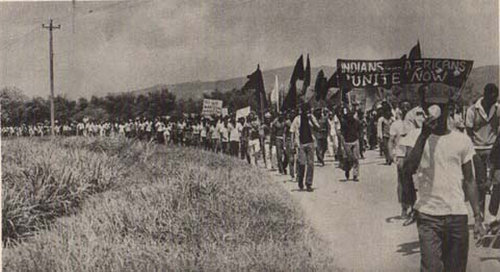
(Courtesy Embau Moheni/NJAC)
Both Samaroo and Kambon have intoned independently, “Bliss was it in that dawn to be alive.” Many others who participated in the March to Caroni have echoed similar sentiments. Although Indians were not as preponderant as Africans in the March to Caroni, some certainly played crucial roles in keeping alive the hope of true nationalism.
In the first post-Revolution convention of the PNM in November 1970, Williams acknowledged the positive impact of the BPM on government’s policies: “The word ‘revolution’ has always held terrors for the privileged groups in the Caribbean.” Boldly embracing the spirit of the BPM, he stated, the “PNM must continue to be revolutionary.” [Fraser, quoted above]. Such a position could not be declared prior to the BPM.
Members of the “Indian-Trinidadian intelligentsia” should continue their critical appraisal of the BPM but they should also offer more authentic analysis of the totality of the Indian contribution to the movement.
To fail to do so is to fail the generation that shook colonialism at its fundamentals, even if they did not completely root it out.
Editor’s Note: Click HERE to read a rebuttal by Ramdath Jagessar, which contradicts the claim of Afro-Indian unity within the 1970 Black Power Movement and suggests the most significant flaw in NJAC’s strategy.
Claudius Fergus is a retired Senior Lecturer in the Department of History at UWI’s St Augustine Campus who specialises in the abolition of British colonial slavery and its transatlantic slave trade.
His major work on the subject is Revolutionary Emancipation: Slavery and Abolitionism in the British West Indies (2013). He has other extensive publications in peer-reviewed journals and edited books.
 Wired868 Wired868 for smart sport news and opinion
Wired868 Wired868 for smart sport news and opinion
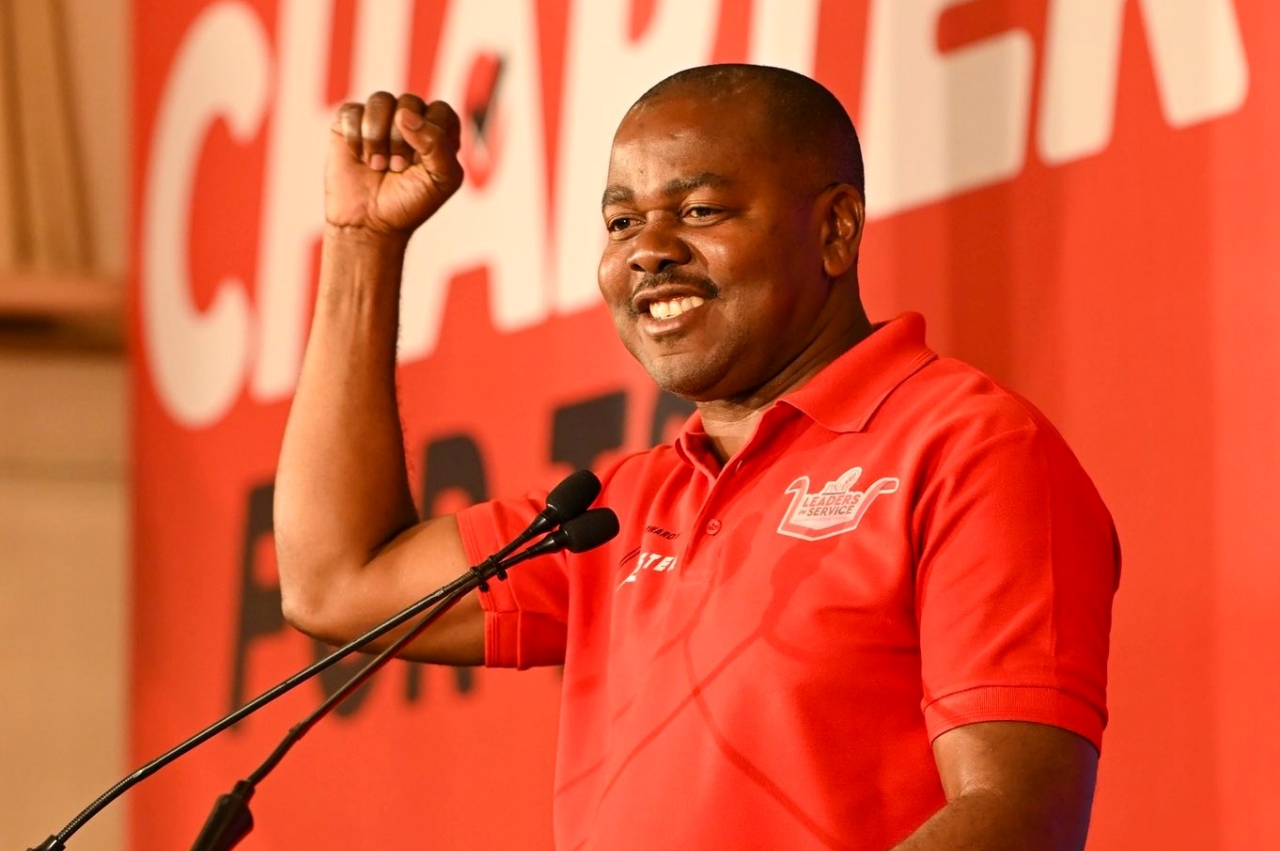
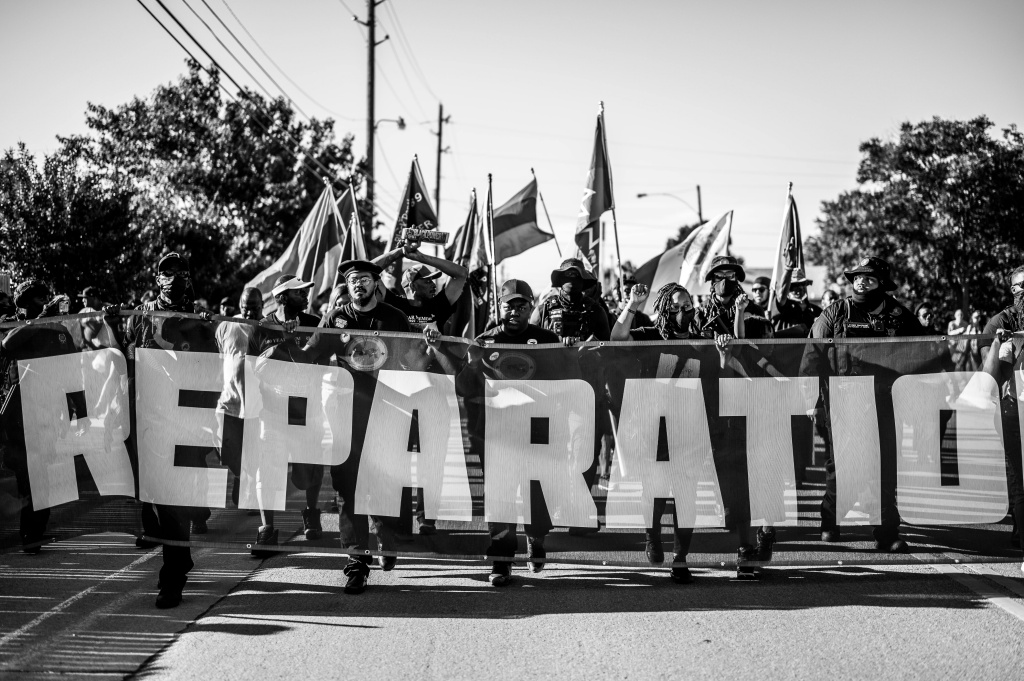




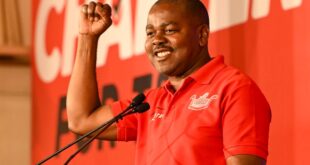
Why is it Badase and Dr. Williams?.If we are on a first name then it should be Badase and Eric.Show respect. Mr.Badase Sagan- Maharaj and Dr.Eric Williams.
Niala Maharaj I think you are wrong on this one Ken Parmasad was at UWI in 1970. I think he was back in the post 1970 period. In 1970 he was a member of SPIC. Ken was always studying. And even before he died, he went to India to do his Doctorate. We were good friends.
One of the major problems with his rant is he pigeonholes most Indians.
For example, he does not differentiate between rural and urban Indians who are quite different even to this day. The Black Power movement received support from urban areas where Africans and Indians were already integrated as opposed to those in rural areas, eg, St. James, Maraval/Bossiere Village, Diego Martin, Belmont, Woodbrook, Barataria, San Juan, and Curepe. Indeed much of the revolutionary action in 70 came from Woodbrook, Belmont, Bossiere Village/Maraval and Belmont, all areas which had relatively significant Indian populations who lived harmoniously with Africans and were very sympathetic to the cause because the issues also affected them.
Exactly.
I remember as a child loving Sharma, pitching marbles with Narvin. Eating from Ms byjo and ms dolly pot and their children from my mother pot. There was racial unity we just didn’t match to show it.
I think Jagessar’s remarks are far closer to the truth than the original piece, but Jagessar also exaggerates tremendously (always has). I do think that whole story about Parmasad preparing the Indian peasants was a fairy story. I’m not even sure Parmasad was at UWI then, because he and I were at UWI at the same time and that was later. Parmasad himself always had a strong leaning towards myth-making. All of this illustrates my own feeling that the focus on history that I notice among Trinis is dead-end politics. The future is what is important, not the past.
So, Niala, the future can exist without the past? The future is not shaped by the past? Please!
It is precisely because the future is important that there needs to be some focus on the past. How else do you avoid repeating errors?
This piece has real value. This raw, politically and racially forged personal testimony speaks volumes, not about the aims, objectives and achievements of the BPR but about the the value system of the author and the important historical figure of Bhadase Maraj thereby inadvertently shedding light on the historic and contemporary challenges involved in bridging the ethnic divide between the two major races in Trinidad and Tobago.
I was asking myself who remember the Black Power days and then men who were killed just this week
And here is the retort (you must have expected one eh Michael Samuel):
“Most of us Indians didn’t like Eric Williams and his PNM and would be glad to see them go. But we had no interest in seeing the Eric Williams black gang replaced by another black gang led by Granger/Daaga and company.
“[…] Once Williams had got the news that a genuine Afro-Indian unity march was coming, he would have hopped on the waiting plane at Piarco and the government would have fallen. Williams didn’t go and, once he was assured by Bhadase [Sagan Maraj] that a mass of Indians were not coming with the Afros to Port-of-Spain, he decided he might as well call the state of emergency and choke down the Black Power Movement.
“Let me say it again. There was no significant Indian-African unity through the Black Power Movement in 1970.”
The following Letter to the Editor—which contradicts the claim of Afro-Indian unity within the 1970 Black Power Movement and suggests the most significant flaw in NJAC’s strategy—was submitted to Wired868 by Ramdath Jagessar.
https://wired868.com/2018/02/20/dear-editor-afro-indian-unity-never-happened-granger-njac-bungled-1970-march-ignoring-baba/
Is this gentleman using “Indian” as a synonym for “Hindu”?
Well at one point he says that Eric Williams was able to get about 10 percent of Indians on side by making headway among Muslims and Presbyterians. So maybe not.
Th question is whether Muslims and Presbyterian s made up 10% of the Indian population. They currently make up more than that.
My grouse is that many times Indian is used as a synonym for Hindu giving a skewed picture of the demographic.
He sounds a bit angry, but I agree with much of what he says on the ‘unity’ march itself.
“Most of us Indians didn’t like Eric Williams and his PNM and would be glad to see them go. But we had no interest in seeing the Eric Williams black gang replaced by another black gang led by Granger/Daaga and company.
“[…] Once Williams had got the news that a genuine Afro-Indian unity march was coming, he would have hopped on the waiting plane at Piarco and the government would have fallen. Williams didn’t go and, once he was assured by Bhadase [Sagan Maraj] that a mass of Indians were not coming with the Afros to Port-of-Spain, he decided he might as well call the state of emergency and choke down the Black Power Movement.
“Let me say it again. There was no significant Indian-African unity through the Black Power Movement in 1970.”
The following Letter to the Editor—which contradicts the claim of Afro-Indian unity within the 1970 Black Power Movement and suggests the most significant flaw in NJAC’s strategy—was submitted to Wired868 by Ramdath Jagessar.
https://wired868.com/2018/02/20/dear-editor-afro-indian-unity-never-happened-granger-njac-bungled-1970-march-ignoring-baba/
Thank you. Very interesting. I am an Indo-Fijian, have always been keen to know what transpired in T&T, Guyana, Jamaica etc. Fiji was ceded to the British’s willingly!!!!…race relation’s have not been as amicable between the two race’s due mainly to the British divide and rule policy. This came to a head in 1987 when the Fijian dominated military staged a military coup against what it perceived to be an Indian dominated government, when in fact the overthrown government was truly multi racial and democratically elected with a Fijian Prime Minister!
It was Indian leaders who stood up against the British and demanded Independence for Fiji whereas Fijians were very comfortable being subjugated under the British.
Race relations in Fiji today have improved markedly though…although the British Union Jack remain’s on Fiji’s flag!!
This kind of romantisization of a failed attempt at Afro-Indian unity through the Black Power march to Caroni is at best embarrassing and at worst disgusting. NJAC people have to stop writing this kind of rubbish.
Get blasted vex if you want. But I have to tell you straight. The Afro-Indian unity march to Caroni was a failure. It didn’t attract any significant amount of Indians to join the march. Even though it passed through heavily Indian areas like San Juan, Curepe, and the Southern Main Road down to Chaguanas, Indians did not join in any large or small number along the way, and Afro-Indian unity in the march just did not happen.
If the intention of the march was to bring down the Eric Williams government by pulling in significant amounts of Indians along with the Africans to a triumphant march back to Port of Spain (and I hope it was!) that was a failure too.
Before and after the march, the NJAC gang made no headway in attracting Indian support enough to measure, and that applies for the years after 1970 up to this day in 2018.
I was one of the hundreds of Indian students at UWI St Augustine from 1967-70 when the Joint Action Committee and then the National Joint Action Committee started the Black Power run. I didn’t join up, even though Granger (he wasn’t Daaga yet!) invited me to do so. I didn’t observe any of the other Indians joining up either, or expressing sympathy with the emerging Black Power Movement. They didn’t go to the February 1969 protest against the Canadian governor general. They didn’t go to the meetings held at the Guild Hall or elsewhere on campus. That’s it for Afro-Indian unity through the Black Power Movement at UWI up to 1970- never happened, never even came close.
And why weren’t we interested? Because that Black Power Movement had nothing for us Indians. The whole thing was couched in African garb. They wanted more power for black people. They were attacking Eric Williams and the PNM for kow towing to the French creoles and white community in Trinidad and preventing black people from getting MORE employment, more opportunity, more upliftment.
Most of us Indians didn’t like Eric Williams and his PNM and would be glad to see them go. But we had no interest in seeing the Eric Williams black gang replaced by another black gang led by Granger/Daaga and company. In our opinion the PNM had power in Trinidad, real black power, meaning control of the government, the military, the entire treasury including all of the petroleum royalties, and Williams as corporation sole controlled over 70% of the economy. And these NJAC people wanted more power than that?
Now as to the Afro-Indian unity march itself, let me touch upon a few rotten eggs mentioned in this article.
Brinsley Samaroo says that Ken Parmasad was “one of the leaders of the BPM” through his writings in OWTU’s Vanguard newspaper and in guaranteeing the security of the March to Caroni. What drivel and nonsense is this?
Leading up to 1970 Ken Parmasad was a leading light at UWI’s Society for Propagation of Indian Culture (SPIC), a very conservative group that would have nothing to do with black power. He may have been on his way to becoming the lunatic Marxist-Leninist, hence his writings in OWTU’s Vanguard newspaper. OWTU was a leftist workers union, the furthest thing from a supporter of the Black Power Movement. To make Ken Parmasad one of the leaders of the BPM through his articles in the Vanguard is total rubbish and Brinsley Samaroo should be ashamed to utter it. Besides, what could Ken Parmasad do to guarantee the security of the March to Caroni? He was a nobody in Caroni. Did he have his own soldiers to counter those of Bhadase
Maraj had the order been given to attack the march?
The writer quotes Brinsley Samaroo going into fairy tale territory in declaring that Ken Parmasad had gone into all the villages along the route of the march “and really conscientised those people”. He says that because of Ken Parmasad’s work old Indian women and men “were prepared to stand against Bhadase!”
I don’t know whether to laugh or cry at this container load of bullshit. So, nobody Ken Parmasad had gone into all the villages and conscientised those people to support Afro-Indian unity, so that they were ready to stand against Bhadase!!!!!!! The writer believes this new superman single handedly conscientised those tens of thousands of Indian people along the route to the extent they would stand against the big boss Bhadase with all his power and his gunmen! Was this Bhadase the head of the sugar workers union, the head of the Hindu Maha Sabha, the rajah of Caroni, the millionaire heavyweight at the height of his power, who could so easily be neutralized by little campus mouse Ken Parmasad? Who would say such stuff? Who would believe such tripe as little old Indians defying Bhadase Maraj?
Some comments from Brinsley Samaroo about the mythical Afro-Indian unity of 1970 and his role in preparing the community for the march have caught my attention.
Samaroo had said he was “press-ganged” into Black Power activism by Daaga, Kambon and Ome, and he assumed the role of “conscientising” the masses, presumably Indian masses. His task was to educate the masses on Indian and Indian diaspora history across the country. Here we go again with another superman, junior lecturer Brinsley Samaroo educating the masses to prepare them for the coming of…Afro-Indian unity!
Are we to believe that Samaroo’s lectures on Indian and Indian diaspora history did the job of preparing the masses for the unity to come? How many hundreds of lectures would that have taken? Why would Indians in country villages want unity with Africans whom they saw as their enemies? This was the era of intense competition between the mostly Afro PNM and the mostly Indo DLP, remember, an era of barely disguised racial hostility. The enthusiastic junior lecturer Brinsley Samaroo seems to think he dispatched all that with a few brilliant lectures, and the writer of this article agrees. I don’t know which of the two is more deluded.
Brinsley Samaroo is quoted as relishing this moment of inter-ethnic nationalism, “The high point in the history of Trinidad and Tobago was when Africans and Indians came together.” And when was this? He says 1970! Didn’t I just say there was no significant racial unity, no moment of inter-ethnic nationalism in 1970 and specifically none in the Afro-Indian unity march? Samaroo’s myth making and self serving recollections have no limit.
Perhaps Samaroo and the writer were talking about the reception of the Afro marchers by the Indians of Caroni and seeing this as some kind of racial unity and inter-ethnic nationalism, but I have to apply the bucket of ice water here.
Bhadase had instructed the people of Caroni to welcome the marchers but not to join them, and that is what Indian people did. He had also instructed his gunmen to open fire on the march if the Afro marchers misbehaved, and I believe had asked them to fire if it looked as if Indians were defying his orders and joining the march. Since neither of those things happened, the gunmen stood back and allowed the march to continue. That is all there was to it.
If you want to interpret Indian people offering cool drinks to the Afro marchers or a meal and a place to sleep overnight as Afro-Indian racial unity and inter-ethnic nationalism, then I have some good swamp land for you to buy in Florida.
Now as to the much fantasized return march from Caroni to Port of Spain, the writer says, “In the euphoria of the successful march to Caroni, the BPM sought more direct confrontation with the social and political elites by planning a march to Port-of-Spain. This planned march triggered the State of Emergency on 21 April.” I have to take issue with this.
He says the BPM planned the march to Port-of-Spain, not the Indians of Caroni. Are we to assume that numbers of Indians would be joining this march in defiance of Bhadase and his gunmen waiting in the bushes? Not a chance. Some country Indians might be ignorant but they were not stupid, and they knew Bhadase was not a joking man about such things. There was never going to be any large amount of Indians on that return march, and that was the whole point of such a march. NJAC had bungled the whole thing and lost their chance to return to Port of Spain with a mass of Indians and Africans the previous day.
They didn’t have to actually reach Port of Spain. Once Eric Williams got the news that a genuine Afro-Indian unity march was coming he would have hopped on the waiting plane at Piarco and the government would have fallen. Williams didn’t go, and once he was assured by Bhadase that a mass of Indians were not coming with the Afros to Port of Spain, he decided he might as well call the state of emergency and choke down the Black Power Movement. Which he did.
A word about Bhadase here, which many have not considered. Why did he tell his gunmen to attack the Caroni march, and why did he tell the Caroni Indians not to join the march? Because he had nothing to gain from the march. If the march picked up a mass of Indians, his Caroni Indians, and the Eric Williams government fell, NJAC would become the government and he Bhadase would get nothing. NJAC had promised him nothing as far as I know. I don’t know if NJAC even had a meeting with Bhadase or sent emissaries to confer with him, and that may have been Daaga’s biggest blunder of 1970. Why didn’t he offer Bhadase a senate seat or an ambassadorial post or even a lot of money if the PNM government fell and NJAC took over?
You see, Bhadase in 1970 was a politician down on his luck. He had been thrown out of the DLP he had founded, his people had been defeated in the 1966 election, and this former MP and Opposition Leader had nothing and no hopes of getting anything. His old enemy Eric Williams had no respect for him. Nobody had any respect for Bhadase politically. But as sugar union leader he had the allegiance of many sugar workers, as Maha Sabha leader he had the allegiance of tens of thousands of Hindus, as the man who built dozens of Hindu schools and gave education to the Hindus, Bhadase was a man to reckon with in many areas except politics.
Bhadase had something NJAC wanted badly, and this was the ability to get a bunch of Caroni Indians to join a march that could bring down the PNM government. So why didn’t NJAC send somebody to ask Bhadase to allow the Caroni Indians to join the march and ask him outright what was his price? Bhadase was a veteran politician and a very smart man on the ground and he would have seen immediately how he could benefit from a big I.O.U. signed by Makandal Daago. It would cost him nothing to tell the Caroni Indians unofficially to go ahead and join the march, baba says it’s OK. Bhadase would have nothing to lose if the march failed and Caroni Indians did not join up in numbers.
I stand to be corrected if this is wrong, but I haven’t heard anywhere that NJAC did the diplomatic encounter with Bhadase. Daaga was a poor strategist and an even poorer organizer. I know. I attended that major NJAC strategy meeting in TIWU offices in early 1970 and saw for myself what a bungler he was, and how he was frustrating the UMROBI delegates from the south and many others. The damn fool attempted to give his “My people” public speech to the delegates from all over the country at the strategy meeting! ,
Instead of talking to the Caroni bossman, NJAC attempted to get their Caroni Indians into the march in defiance of baba, and relying on featherweights like Ken Parmasad and Brinsley Samaroo.
Why then did Bhadase come to some understanding with Eric Williams? I’ve been told that Bhadase told Williams, “Come by my house, Bill. Nobody will touch you here.” It’s simple. Williams was a veteran politician and he could offer Bhadase something that he wanted. NJAC was offering nothing at all, and something beats nothing any day of the week.
Brinsley Samaroo says in this article that Bhadase feared the cultural-racial implications of permanency in the unity between Indians and Africans. I say, what unity? NJAC never got any unity between Indians and Africans and certainly got nothing of consequence in the Afro-Unity march. How could Bhadase fear permanence of a unity that never happened? Really, this man Brinsley Samaroo is too much!
The writer takes a lag at Kumar Mahabir’s writings on the BPM, which he believes suggests that the Indian-Trinidadian intelligentsia was most concerned about 1970 because it came too close to achieving broad-based Indian-African unity. Again this nonsense about broad-based Indian African unity in 1970!
Let me say it again. There was no significant Indian-African unity through the Black Power Movement in 1970. There was no significant Indian-African unity in the Caroni march. There was no broad based or narrow based Indian-African unity in 1970. I don’t call Rajah Ramlogan and Josanne Leonard Indian-African unity.
There wasn’t even African unity through NJAC in 1970, or any time since then. Most of the Africans stayed with the PNM and have stayed there. NJAC contested several elections in majority African constituencies and got convincing blows every time.
Who then had got African-Indian unity in Trinidad in recent times? Eric Williams and the PNM is the answer. In 1956 the PNM picked up most of the Muslim community, most of the Presbyterians and some assorted other Indians, amounting to well over 10% of the Indian community. And they have kept those Indians and gained others, reaching as much as 15% of the Indian community in my view. I don’t like the PNM, as you may have guessed, but facts are facts.
I think it’s time to put an end to this little sampat of this foolish and self delusional article. It’s too easy. There’s a whole bag of other errors, misconceptions, plain old doggy doo doo in this article, but I fear I may tire the reader. Those who disagree with my response are invited to list them out point by point and make your case against each point. One sentence responses calling me deluded, racist, stirring up trouble, old fool and other endearments just will not cut it.
Sir…. You lost all credibility to me when you stated you ‘dislike’ the PNM …. I actually was enjoying the various point of views on that particular March, and I read that entire article… and your response (well up to I don’t like the PNM) … as a young person who wasn’t there, there are pieces in our history that we know not of… and we rely on the older folks to share it with us.
Since 1930’s..correction
My dad, a lecturer at UWI, was part of this. I meet many of the key players as a teenager. I agree with Kwesi that this important part of our History should be included in the conversations in our schools. History is still taught in some schools but a more effective vehicle could be Caribbean Studies which is one of the compulsory subjects at CAPE.
Does history in schools give any proper account of things from Chief Hyarima to the 1970 revolution, Kathleen?
I really can’t remember any of that from my school life and I’m doubtful.
Not sure Lasana, Llewellyn (Short Pants) is more knowledgeable in that area.
History is also a very dangerous weapon. You teach a people its history and well… the powers that be will be in trouble.
Kathleen, Short Pants chimed in higher in the thread. And I agree Keston. Step one is we get a feeling of self worth, which is badly needed in this country.
The Indian girl with the tie and the raised fist in the photo of the students marching, I believe is Josanne Leonard.
Josanne Leonard… Is that you? Lol.
She wasn’t easy y’know. Still isn’t.
Way to go Jo!
I believe it is Josanne.
History we must learn and not forget
Interesting…..
Thanks indeed. I remember being scared of the marchers. Could not understand what was happening. This knowledge is priceless.
Nice 😉
Its amazing that they say the movement was geared towards black people yet it opened doors for all in both the private and public sectors.
It wasn’t a black power movement. The NJAC never called it that and hated the term.
They always believed the government tried to make that tag stick as a means of making it unattractive to other races and to marginalize them.
Its a trick still used today.
Race defines class in a colonial society which is NOT racially homogeneous. .Classes in the Caribbean were defined by color. .The planter slavery owning class was always and only white..The underclass indentured. .enslaved was always non white..The working class transformed into wage slaves revolted as a class which historically was black. .i.e. non white. .thus it was so easy to call it a “black power” revolt
Lasana Liburd I am sure you can find one or two members of NJAC who will support this claim but they are in the minority most veterans of the struggle are proud of the term Black Power Revolution. Coined and popularized by Trinidadian Civil Rights legend Kwame Toure formerly Stokley Carmichael the Black in this phrase is a political term that refers to all those groups that are subordinate within the power structure defined by white supremacy. The protagonists of the revolution were very clear about this and they called for Africans and Indians both groups who suffered in the neo-colonial order to unite and again the vast majority are very proud of the designation and struggled deliberately under the banner for just that, Black Power.
Yorley, I’m talking about the NJAC leaders and not the rank and file. I know exactly where the term “black power” comes from and they do as well. Stokely Carmichael was once a guest of theirs.
But Carmichael’s ideology was never their ideology. The “black power” term sounds romantic and powerful because we have all heard it before but it was not something the NJAC wished to adopt themselves.
It is not that they didn’t have the same end goal but there was a big difference in how they hoped to get there.
And Dr Kumar Mahabir and the like have apparently used it to mock the movement as copycats who were just apeing what was happening in USA.
It was when organised labour intervened that Williams and his minions went for the state of emergency..Williams, as the ‘father of the nation’ boasted that he kept ‘oil and sugar apart..Meaning dividing the working class along racial lines.. Some father eh? It moved then into a working class struggle which was affecting production in a way a student movement could not..Marches of WORKERS of all races were occurring.History had left Bhadase as the old patriarch, communal leader behind who exploited religion and culture for personal gain leaving the labourers as peons essentially..The army revolted but the genesis of that revolt pre-dated the 1970 insurrection..The young leaders in the Army were plotting long before.
Lasana Liburd Dr Kumar Mahabir and his cohorts are rank mischief makers who are part of a Tradition going back to FEM Hosein who feel it is to the benefit of themselves and the Indian community at large if they keep a healthy distance from people of the African diaspora whom they like to refer to as “blacks”. Having said that I am telling you for a fact having just spoken to one of the veterans of the movement that what your saying is incorrect. It is a fact that one or two leaders of NJAC have taken this position publicly but I have to let you know that they have been criticized publicly and condemned privately for this revisionism. If my previous comment was not clear please revist Rae Samuels explanation of black in black power. Rae you talk about labor intervening as if they were not always present in the movement. Not sure where your going with that.I would like you to tell me however when organised labor was not involved.
In my experience Black covers the range from approximately twenty percent African to the full hundred. Every Trinidadian I have ever met within that range in London has registered with me as Black. I suppose that I have always known back in Trinidad its a different story.
I see now why we regularly take a good cussing from Indian comments in this group. It turns out that we don’t defend our position on these pages because it’s only me that’s Black. So when Darryn Dinesh Boodram wrote on these pages last week that romanticized Haitian history is all based on lies, he was only cussing me and Haiti.
From memory in my teens in 1970, Britain had anchored a warship off Trinidad’s coast ready to invade to protect British interests. That’s diplomatic speak for “Kill as many wogs as necessary to retain the constant flow of whatever it is that keeps Westminster happy. Even as a young schoolboy I understood that.
Five years after Malcolm X and having Trinidadian Stokely as one of the Black Power leaders in America and Darcus Howe as a Black Power leader in London, the tail did wag the deluded dog and put us in a Black Power revolution. There is no doubt.
Danny Holder what are you really saying???
Nice question..I like how you put it..I want to suggest that between 1962-70 there was ‘unrest’ in Trinidad and tobago..People had been struggling since 1970 for ‘home rule’..Butler also led a a labour party..We had a strong radical tradition in the Caribbean..The workers and progressive intellectuals challenged the status quo..williams had no idea where to go after he went to England and was ‘handed an Independence constitution’..’62..oil strike.. coming of Weekes led Rebel OWTU movement……’63..M’banefo commission ..looking for communists much like they are looking for Islamists now..”65..House arrest of CLR James who came to cover cricket for the man Guardian..That did not last..You do not detain CLR james anywhere in the world..Industrial Stabilisation Act..To weaken the labour movement and prevent labour unity..”’68..bus trikes..Lloyd Best/Lennox Pierre playing leading roles..”69..jour Ouvert Pine toppers play a mas depicting PNM and the ruling class as pigs the term use by the Panthers..’70..Sir George Williams affair…Note these localised responses..But by Feb 1970 Students, workers, progressive intellectuals morphed into the National Joint Action Committee, a front that united communities, work places, schools, cultural movements, west India diaspora..Williams as a student of history recognised the QUALITATIVE difference a united front represented..The movement was not behind typewriters and desks..People were in the streets under a leadership that transcended race and caste..But organised labour able to impact production, and with clear political demands was on the move.
Yorley, all I can tell you is I’m speaking with people from the top of NJAC.
This has nothing to do with Kumar Mahabir.
I raised it with Dr Fergus and we discussed it. You can talk to him if you like.
Please understand my position. If this is what I was told from the top of the NJAC then I obviously won’t change my mind because someone that I don’t know from the body of the organization said differently.
We did a series on the 1970 revolution through Embau Moheni two years ago. We carried five or six pieces. The term Black Power wasn’t used once.
Just that Yorley, it is not possible to reinterpret Trinidad’s progress since 1970 as other than a progression of our history to strong African representation. By the mid seventies when there were thousands of Trinidadians posted abroad on courses, they were all thankful, and referred to that bountiful milestone as “since Black Power”.
Whether intentional or not, those involved gave Trinidad a spur to catch up with the worldwide African thrust.
The anti -apartheid struggle resonated strongfully” in the region also putting quilting leaders /traitors on notice ..The Caribbean is the home of Sylvester Williams. Marcus Garvey. .CLR JAMES. ..George Padmore..Claudia Jones..Stokely “Kwame Ture” Carmichael…Franz Favor .Walter Rodney. ..Giants of African thought
Thank you for your intervention Yorley Alejandra Mendez Lasana Liburd you speak the truth about what you have been told but this is a mythology first expressed in a public forum by Machandal Daaga at a conference at the UWI in 1990, 20 years after the BPR. Brother Embau and others are simply repeating the position taken by their leader; a position contrary to his own previous pronouncements which has no basis whatsoever in reality. Daaga was rightly taken to task by Professor Gordon Rholeur and others at the conference for his revisionism and my father who is one of the most prominent figures of the movement still alive today will tell you that they actively promoted that definition of themselves and refined the ideology to suit local circumstances. I would challenge anyone current NJAC members to find a statement, any statement by any prominent leader during the period criticizing the label. I can guarantee that this will end the debate.
Shabaka thanks for sharing that. And you would appreciate my position then. It’s hard for me to suggest that Daaga and Embau didn’t know what was happen in NJAC in 1970.
Now that I can put an identity next to the dissenting voice, I feel I can safely say now that it is a matter of contention. ??
These narratives should be taught in secondary school – a mandatory infusion of our colonial and post colonial history.
With that foundation, the politics of this country will truly begin to change
Couldn’t agree more.
Things went downhill when history was practically removed from the school curriculum.
Michael it was once on it in a meaningful way?
Lasana that’s how I fell in love with it. I looked forward to history class.
Wait, history was removed from the curriculum? Eh??
By “practically” I’m guessing he means watered down. Short Pants can you help us out on this? Or Kathleen Anderson?
There was an attempt (resisted by some principals, with great difficulty) to introduce History – at the secondary school level – from the Form Four Level only. The plan recommended/advocated/instituted a subject called Social Studies for all students in Forms 1, 2 & 3. Students (parents) were free to select (choose) History in Form Four. The plan allowed no choice or option to schools (principals). Thus; schools that offered History (and/or Geography) previously were instructed to substitute those with Social Studies. This was part of a national plan for an examination at the end of the Third Form. (n.b. I left the formal school system almost ten years ago. I cannot therefore speak about what currently obtains.)
Short Pants, thanks very much. Was the thinking then by the ministry that history wasn’t important enough?
Now I’m trying to remember what CIC had between 1986 and 1991. ?
Spare yourself the trouble, Liburd. On the abundant evidence that I have, CIC had cricket and football, that’s IT! Hahahahahahahahaha.
I think it varies from school to school because history was taught at my school but we were learning stuff like Ancient History in form 2. Mind you this was 15 years ago. I did Caribbean history for CXC. But as far as I know local history was not taught at lower levels in any meaningful way and it was driven by whatever textbook was required. Not sure what going on these days, maybe someone in the system could weigh in.
I recall that Dr Rowley made a platform promise when he suggested Garcia to me education minister that history will be brought back. But sigh… we wait for that.
I left CIC in 1997. The college had both History & Geography as a part of the curriculum, then. For a number of years before that, I always requested and was given a Form 1 History class. ‘Twas always a joy to introduce the youngsters to the subject. One of those “youngsters” hailed me recently. He now teaches History at a university in Canada. Those were the days!
Present sir
This is why the country is the way it is, just imagine if we could have such unity again like this then our so called leaders will be forced to account for their actions. They will not be able to use the race baiting smoke screen.
Our so-called leaders will no longer *be* leaders.
(Yes, Lasana, I am back…kinda…. this iPad is NOT my beloved MacBook so it’ll be a while still while I completely figure this out, lol)
A good balanced piece. I think there was a lot of misunderstanding of Black Power and those words black and power were fearful ones for many rural Indians in the runup to 70 and the aftermath. Walter Rodney was essentially saying that working class Indians and Africans had far more in common with each other than they realised. Of course this was a huge worry for the established parties/activists on either side. Much to say, but yep, the reality today illustrates clearly that it still remains the case.
Kala, the things our children will never see in their history books eh?
I should sue the Ministry of Education for wasting my time! Lol.
I want to hear more and more about this time and the response to the uprising from the status quo. There are still many gaps.
I’d love specifics on the reactions from the government, the private sector and the elites of that time. And The opposition party too.
Lasana Liburd reading list https://books.google.co.uk/books?id=XOI3DwAAQBAJ&pg=PA128&lpg=PA128&dq=Brian+Meeks+Black+Power&source=bl&ots=bU2DnEaQIG&sig=_Dni3BPgZVk1XQyR4_ug-InMluc&hl=en&sa=X&ved=0ahUKEwjm6vLVqLDZAhXGKsAKHY4mDAQ4ChDoAQhYMA4#v=onepage&q=Brian%20Meeks%20Black%20Power&f=false
Go read National Workers Union Facebook page for relevant data…Bhadase and Williams united to preserve the neo-colonial status quo..The history is not hidden Go visit the West Indian section of any library in Trinidad/Tobago..Read the old Vanguard/hold the Fort/Caribbean Contact/Outlet publications..Stuff you WON’T find on You Tube..How many of you know that the PNM led the fight to have Frank Worrell captain of the West Indies? Under the guidance of CLR James..Go read Beyond the Boundary.
Rae I read beyond the boundary. But I do want more specs on 1970. Will check what was posted.
1962 independencia was a neo colonial settlement. ..The same social and economic arrangements were in place..And local black/negro élite simply moved in.This was the Era of anti colonial struggle world wide.Flag independence wasn’t enough. .There were protests all over the Caribbean. Eric Williams was blaming everything on communism much as islamismo is the current scapegoat. A workers insurrection wrongfully called a Black Power movement erupted
That’s how we got all the national companies in everything from oil to postal services to food. .flour mills..transportation. ..PNM was forced to take state control of major sectors of the economy. ..oil…food..transportation.